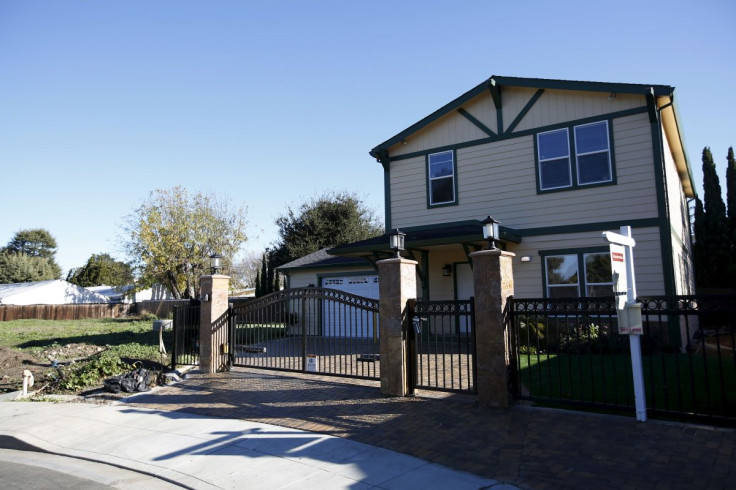U.S. Home Sales Slump Further; Median House Price Hits Record High

U.S. existing home sales tumbled to a two-year low in May as prices jumped to a record high - topping the $400,000 mark for the first time - and as mortgage rates increased further, sidelining first-time buyers from the market.
Despite the fourth straight monthly drop in sales and declining affordability, reported by the National Association of Realtors (NAR) on Tuesday, the housing market remains fairly hot, with properties typically staying on the market for a record 16 days last month.
"The market is far from weak," said Conrad DeQuadros, senior economic advisor at Brean Capital in New York. "It will likely take some time for the full impact of monetary adjustment to feed through."
Existing home sales fell 3.4% to a seasonally adjusted annual rate of 5.41 million units last month, the lowest level since June 2020 when sales were rebounding from the COVID-19 lockdown slump. Sales rose in the Northeast, but declined in the Midwest, the West and densely populated South.
Economists polled by Reuters had forecast sales would decrease to a rate of 5.40 million units. Home resales, which account for the bulk of U.S. home sales, tumbled 8.6% on a year-on-year basis. May's sales were mostly closings on contracts signed one to two months ago, before mortgage rates started accelerating amid a surge in inflation expectations and the Federal Reserve's aggressive interest rate hikes.
The 30-year fixed-rate mortgage jumped 55 basis points last week to a 13-1/2-year high average of 5.78%, according to data from mortgage finance agency Freddie Mac. That was the largest one-week increase since 1987. The rate has surged more than 250 basis points since January.
The report joined housing starts, building permits and homebuilder sentiment in suggesting that the housing market was losing speed under the weight of higher borrowing costs. It was also the latest indication that the U.S. central bank's rapid monetary policy tightening was slowing the overall economy.
That was underscored by a separate report from the Chicago Fed on Tuesday showing its National Activity Index fell to a reading of 0.01 in May from 0.40 in April, which it said "suggests economic growth declined in May."
A zero value for the monthly index has been associated with the national economy expanding at its historical trend rate of growth. Fears of a recession have been mounting in the wake of the Fed's decision last week to raise its policy rate by three-quarters of a percentage point, its biggest hike since 1994.
The Fed has increased its benchmark overnight interest rate by 150 basis points since March.
U.S. stocks on Wall Street were trading higher after a recent sharp sell-off. The dollar fell against a basket of currencies. U.S. Treasury yields rose.
SUPPLY STILL TIGHT
The housing market is the sector most sensitive to interest rates. Its slowdown could help to bring housing supply and demand back into alignment and lower prices.
The median existing house price raced 14.8% from a year earlier to an all-time high of $407,600 in May. It was the first time that it has risen above the $400,000 level.
Sales remained concentrated in the middle- and upper-price parts of the market. The $250,000-$500,000 price bracket accounted for 42.0% of the houses sold last month, with the $500,000-$750,000 segment making up 19.3%. Only 19.5% of the homes sold were in the sought-after $100,000-$250,000 price range. Big price gains were reported in Miami, Nashville and Orlando.
There were 1.16 million previously owned homes on the market, following a seasonal monthly bump of 12.6%. Still, supply remained 4.1% down from a year ago.
With demand cooling, monthly supply is likely to continue steadily improving. The government reported last week that housing completions in May increased to the highest level since 2007, while the backlog of homes yet to be built hovered near record highs.
At May's sales pace, it would take 2.6 months to exhaust the current inventory of existing homes, up from 2.5 months a year ago. A six-to-seven-month supply is viewed as a healthy balance between supply and demand. Eighty-eight percent of homes sold in May were on the market for less than a month.
First-time buyers accounted for 27% of sales, down from 31% a year ago. All-cash sales made up 25% of transactions, up from 23% a year earlier.
With homeownership out of the reach of many people, there is an increase in renting. The NAR said this trend was drawing more Wall Street investors to the market, pushing first-time buyers further out.
The NAR urged policymakers to consider temporarily lowering capital gains taxes for mom-and-pop investors to sell to first-time buyers.
© Copyright Thomson Reuters 2024. All rights reserved.




















